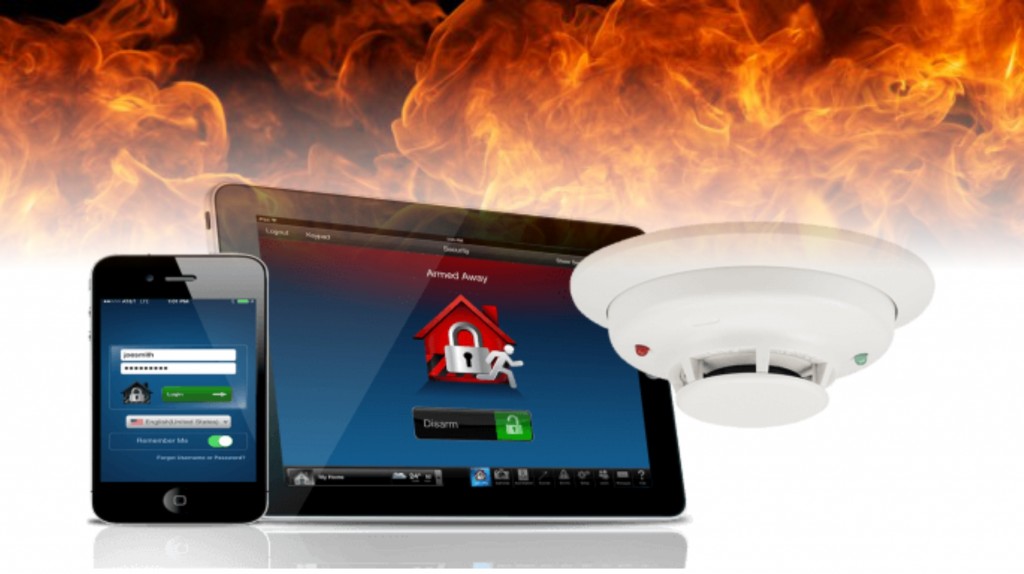 Microchip technology led twelve years ago to the introduction of addressable intruder alarm systems offering maximum benefits to the installer and user, while also being of the highest security integrity. Since then, higher performance chips have been developed that are being used to enhance the performance and reliability of addressable security systems.
Microchip technology led twelve years ago to the introduction of addressable intruder alarm systems offering maximum benefits to the installer and user, while also being of the highest security integrity. Since then, higher performance chips have been developed that are being used to enhance the performance and reliability of addressable security systems.
The new chips will ensure much wider use of these systems, especially in commercial and industrial applications, as well as in the domestic sector. The use of microchips makes the wiring of a medium sized alarm system simpler and cheaper than an equivalent conventionally wired system, In addition, a system using microchips is easy to programme and also offers more operational choice than a conventional system. Basically microchips bring the equivalent of conventional fire alarm technology to intruder alarm systems, making these addressable. Every chip is pre-programmed with an address, and is fitted into the required detectors. The control panel continuously monitors the status of these devices to provide individual identification and monitoring of alarm conditions and tampers. The microchips, or 'biscuits' as they are called, can be used with any make of detector or alarm device which has contacts that can be opened or closed when operated.
The devices can be Passive Infrared Detectors (PIRs), magnetic contacts, vibration sensors, panic buttons and even doorbells. Up to 30 individual biscuit managed devices connected to a single line can be monitored in this way. And, depending on the control panel used, you may be able to have multiple lines, to increase the number of points up to a maximum of 240, that can be connected to, and monitored from, the control panel. The devices are connected to the control panel via a four-core 0.2mm2 cable.
Two of the cores check for the presence of the device (if the device disappears, then a “tamper” is generated), and for the status of the device (allowing for normally-open or normally closed devices to be used). The second pair is current carrying, for powering voltage-operated devices such as PIRs and inertia sensors. One of the major improvements arising from the microchip developments that have taken place is that up to 30 devices can be connected to a four-core 0.2mm2 cable running up to a maximum length of 400m. Previously 30 devices could be accommodated only on 100m or less of cabling. Another major improvement is that the new microchips are more immune to electrical noise – the 'Hall Effect' created through the crossover between the magnetic field necessary to operate certain devices and current has been eliminated. This considerably reduces the possibility of false alarms.
The new chips are designed to operate over an increased temperature range – in temperatures as low as -25ºC the devices will continue to function, allowing installation in harsh environments. A major benefit of digital addressable systems is the ease of their installation. Flexible wiring possibilities, combined with simple step-by-step programming, can significantly reduce installation time. Where the control panel is located near the centre of an installation, it may be convenient to star out from the control panels with a small number of devices on each leg of the star.
 When the control panel is located at one end of an installation, it may be more convenient to run a main length of the cable through the installation and branch off from this to each group of detectors. In a conventional intruder alarm system, each detector is individually wired back to the central control panel. This can result in a spaghetti junction of wires within the control panel, increasing the chance of installer error.
When the control panel is located at one end of an installation, it may be more convenient to run a main length of the cable through the installation and branch off from this to each group of detectors. In a conventional intruder alarm system, each detector is individually wired back to the central control panel. This can result in a spaghetti junction of wires within the control panel, increasing the chance of installer error.
This invariably means more cables, more man-hours installing them, and therefore greater costs. In addition, return visits to site can be hampered by the frustration factor of separating the cables to identify where they are connected. In a lot of modern housing the flooring materials used means that re-routing the cable back to the panel tidily can be a genuine problem. By being able to spur onto the nearest line, wiring a panel becomes much easier, quicker and more cost effective. Now that the range, so to speak, of the digital addressable system monitoring up to 30 devices has been extended from 100m to 400m, it becomes eminently suitable for installation in commercial and industrial premises. In addition, if the control panel supports multiple addressable lines, then the area being covered can be way in excess of 30 devices, covering nearly all commercial installation requirements. Existing digital addressable intruder alarm systems using the currently available microchips can generally be upgraded using the new ones. In some cases there may be a need to upgrade the alarm panels to ensure their compatibility with the new microchips.
A fine illustration of the benefits of a digital addressable system is provided by a builder who might want to extend the house burglar alarm system to cover the attached garage. This may well require a detector on the garage door, a shock sensor on the windows and magnetic contacts on the back door. All that would be necessary using this technology would be to add a spur from the nearest point on the main alarm cable and then daisy-chain the devices onto the spur.
 It would be as simple as that. Furthermore, the savings in materials used and man-hours spent in installing would be considerable. Market research and feedback from installers of intruder alarm systems indicate that, compared with conventionally wired systems, savings in time of up to 50% are achievable, plus significant reductions in material cost. Because of these cost benefits, and the advancements now made in the technology, the demand for these systems is set to grow significantly. For more information on ADE's latest addressable intruder alarm systems.
It would be as simple as that. Furthermore, the savings in materials used and man-hours spent in installing would be considerable. Market research and feedback from installers of intruder alarm systems indicate that, compared with conventionally wired systems, savings in time of up to 50% are achievable, plus significant reductions in material cost. Because of these cost benefits, and the advancements now made in the technology, the demand for these systems is set to grow significantly. For more information on ADE's latest addressable intruder alarm systems.




















































